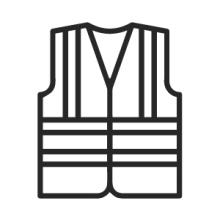A wide variety of chemicals are used in salons, such as hair colours, bleaches, perming solutions and cleaning products, many of which can be hazardous if not used correctly.
Care should also be taken with dust, fumes, vapours and mists. It is essential to follow instructions for use and the information provided on the safety data sheet. All staff should be fully aware of the requirements for each product and the appropriate control measures.
Extra care should be taken with any chemicals displaying the red and white diamond warning symbol as they will be particularly hazardous.
The Control of Substances Hazardous to Health Regulations 2002 (COSHH) requires that a written risk assessment should be maintained for hazardous chemicals and should be updated as necessary.
Particular care should be taken if staff show signs of dermatitis or other skin conditions. Non latex disposable gloves and barrier creams will help to minimise the risks when using chemicals.
The regular use of chemicals may also contribute to some respiratory problems and as such it is essential that adequate precautions are taken for example by suitable ventilation.
